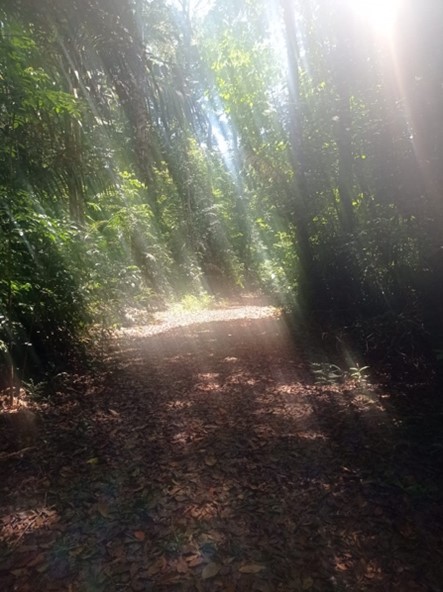Daily life of trees in the amazon jungle
Written by: Raquel González Armas and Hugo de Boer
At six in the morning the first rays of sunlight reach the tops of the tallest trees of the Amazon jungle. This first light gives the canopy trees a signal to open their stomata and start an intensive day of photosynthesis and transpiration. As our aim is to measure the daily dynamics in photosynthesis and transpiration of the forest around the ATTO tower, we follow the trees’ schedule and start our measurements also at six. Our workday therefore typically begins in the dark at a quarter to five. Different from the trees however, our signal to start a day of intensive measurements is the smell of fresh coffee coming from the camp kitchen.
Although the tallest trees see the first light at six, it takes another hour for the lower canopy trees to receive direct sunlight as well. Understory plants typically don’t see direct sunlight before nine, if at all. Leaves in the understory need to wait patiently for the sun to climb high enough so rays of sunlight can find a direct path along the leaves and branches of higher trees. Figure 1 shows how a narrow beam of sun rays reach the forest floor at noon to create so-called sunflecks in-between the shaded areas.

Figure 1: Sun rays penetrating forest canopy at noon.
Measuring photosynthesis and transpiration on leaves high up in the canopy is not an easy task. Luckily our team counted two skilled tree climbers who are experts in climbing tall trees and sampling leaves and branches for ecophysiological research. In figure 2, one of the climbers can be seen sampling branches from one of the tallest trees in our measurement area. Once collected, a small branch is transported quickly to our instrument on the forest floor and measurements are taken before the leaf dries out and stomata close.
Figure 3 shows our measurement setup, which may appear rather comfortable by using the walkway that has been installed to prevent the erosion of the forest floor during the rainy season. However, the open space created by the walkway also provides an excellent hunting ground for the Mutuca insect. As can be seen in figure 4, this big fly has a long needle-like nose that it uses to bite hard-working researchers. As easy targets, we surrender to the power of the jungle and pay the price of one Mutuca bite for each data point.

Figure 2: One of the tree climbers sampling branches from a Dinizia excelsa tree, one of the tallest trees in our measurement area.
All-in-all, measuring photosynthesis and transpiration for a full day can be quite exhausting. We therefore welcome the moment when the sun slowly sets over the jungle at six in the evening and the tall canopy trees becomes engulfed in the shade just like the lower layers of the canopy. By this time, all trees have stopped photosynthesis and close their stomata to prevent unwanted water loss at night. For us, sunset is the moment to save our data, pack the instrument and return to the kitchen camp for dinner and a good sleep in our swinging hammocks to be ready for measurements the next day.
